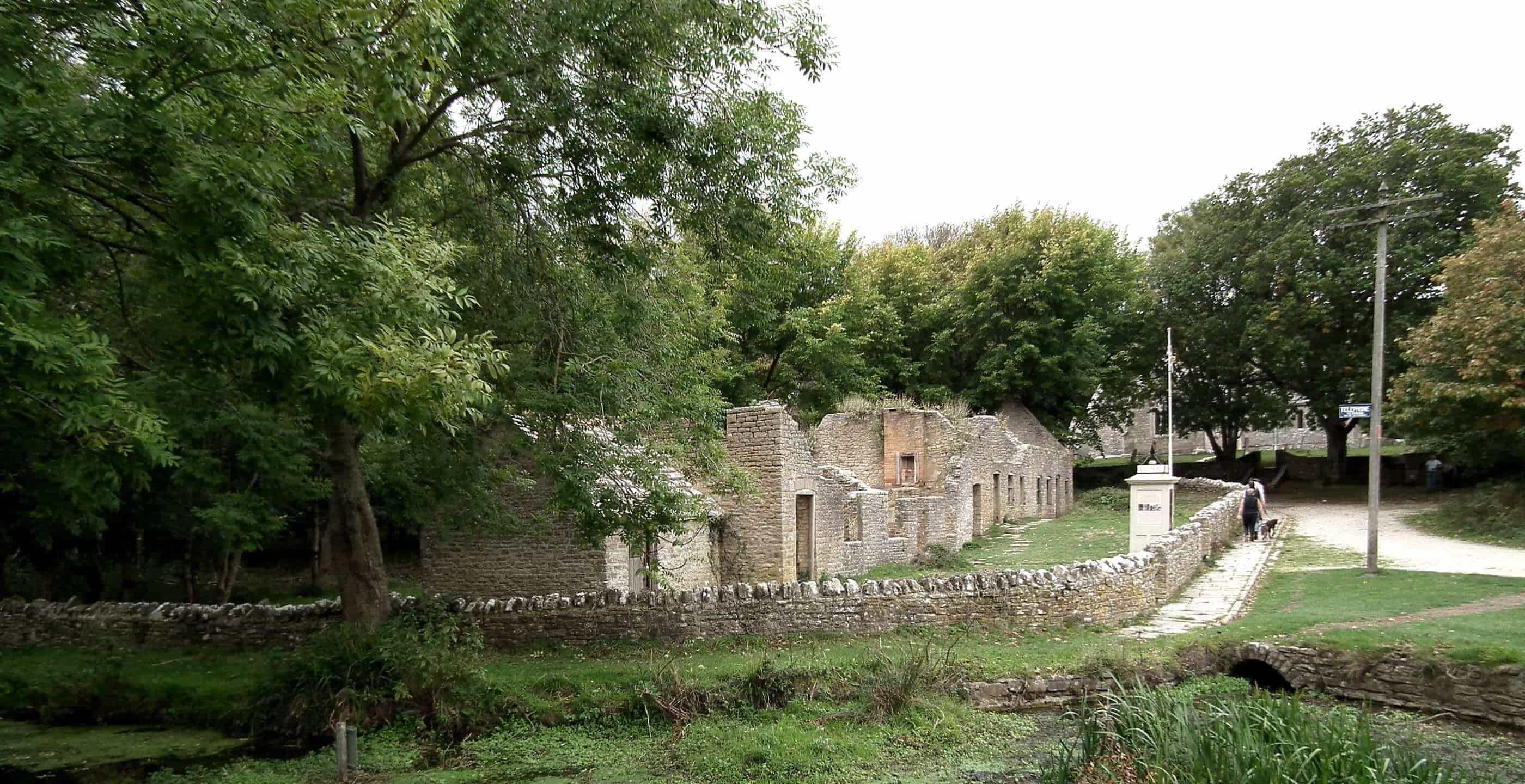There is a slumbering air about the village of Tyneham in Dorset. As you leave the car park and walk towards the main street of this deserted village, past the telephone box in front of a row of cottages, it feels as though you are entering a place frozen in time. The villagers are long gone, moved out by the Army on 19th December 1943 as part of the preparations for D-Day.
Tyneham lies in a beautiful valley, untouched by modern farming methods and rich in wildlife, just a 20 minute walk or so from the sea. Today the village is part of the Lulworth firing ranges, owned by the Ministry of Defence. If you intend to visit, it is advisable to check that the road to the village is open; if the range is in use, the road will be closed!
Before 1943, Tyneham was a working village; a simple, rural community with a Post Office, church and school. Most inhabitants relied on farming and fishing for their livelihood. As you walk around today, you are guided by information boards on the various buildings, describing who lived there and what part they played in village life.
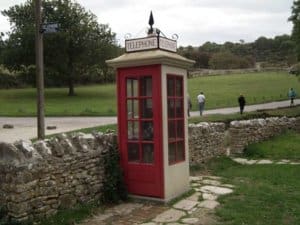
Your journey back in time starts at the rather grand-looking telephone box. The box, a 1929 K1 Mark 236, has been kitted out to appear just as it would have done during the early years of World War Two, with authentic fittings and wartime notices. The K1 was Britain’s first standard public telephone kiosk, designed by the General Post Office. The box stands outside the Post Office, No 3 The Row, the home of the Driscoll family at the time of the evacuation.
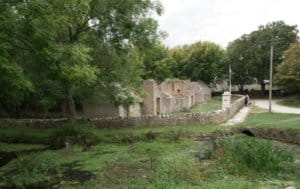 View up ‘The Row’ towards the church and the school. In the foreground is the village pond.
View up ‘The Row’ towards the church and the school. In the foreground is the village pond.
Veer left at the end of the first row of cottages and opposite the church you will find the village school. As you enter the building, the exhibition in the corridor introduces the history of the school, with images of school life from the Victorian era to World War Two. There are photos of the children celebrating Empire Day in 1908, as well as class photographs from as early as 1900. Move into the schoolroom and it is as though the teacher and pupils have just stepped out of the room. Exercise books lie open on the children’s desks. The posters on the walls reflect the curriculum at the time: the emphasis was on reading, handwriting and arithmetic, along with nature study.
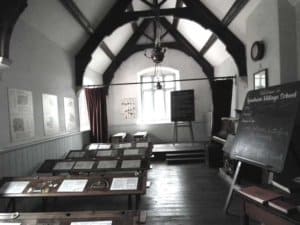 The Schoolroom
The Schoolroom
Across from the schoolroom sits the village church. Here in the church, the displays are of the villagers themselves and their daily lives. Sunday churchgoing was an important part of village life, with two services each Sunday. As you move around the church, reading the storyboards, you begin to feel a connection with the villagers and start to wonder why, after the war, did they not return?
On the day of evacuation in 1943 a letter written by the villagers was pinned to the church door:
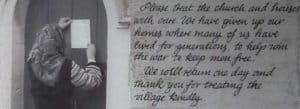
A pledge was given by Winston Churchill that the villagers could return ‘after the emergency’ but in 1948, with the Cold War looming, it was decided that priority had to be given to defence needs and the villagers could not return. The area has been used for training British armed forces ever since.
In 1961 the roads and paths in the valley were closed and access to the village was lost. Then in 1975 public access to the ranges was increased and today the valley – and access to the village – is available, on average, for 137 days a year.
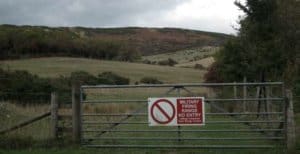
How to get here:
First of all, check if access to the village is open! The Lulworth ranges are open most weekends and Bank Holidays, but for full dates please click here. https://www.tynehamopc.org.uk/tyneham_opening_times.html
Take the road opposite the entrance to Lulworth Castle in East Lulworth, following the sign, ‘All military vehicles turn right’. A little way along, take the right turn signposted ‘Tyneham Village’. At the top of the hill there is a superb viewpoint with glorious views over the valley. Past here, take a right turn down into the valley to the village.
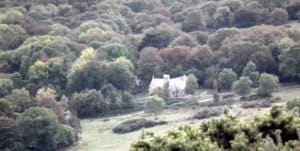 View of the village church and the valley from the viewpoint
View of the village church and the valley from the viewpoint
